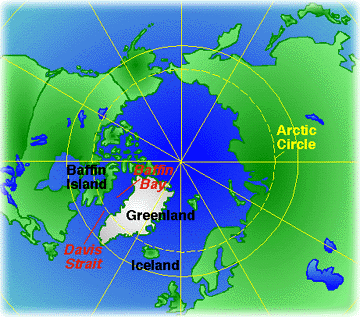
Hello! My name is Jay Schauer and I teach a variety of science courses at
Wilsonville High School in Wilsonville, Oregon just south of Portland.
Currently I am teaching Biology I, Geology, Physical Oceanography, and
Advanced Placement Biology. I have also taught Ecology and Marine Biology
at WHS. I also coach cross country and track. In the past, I taught at
West Linn High School in Oregon, Tanana Middle School in Fairbanks, Alaska,
and Cypress Creek High School in Houston, Texas.
I was fascinated by animals as a kid and my high school science teachers
furthered my interest in Biology. I went on to study science at The
University of Texas at Austin where I received a B.S. in Biology and
certification to teach in Texas. I later went to the University of Alaska
in Fairbanks where I studied the breeding ecology of Common Murres for my
Master's of Science in Zoology. While in Alaska I was also able to work on
projects involving arctic foxes in the Yukon Delta, sea otters in Prince
William Sound, and caribou in the Prudhoe Bay oilfields. After leaving
Alaska for Oregon I was able to work for Nike for two summers in their
environmental research department. I am thrilled to have the opportunity
to work aboard the Coast Guard icebreaker HEALY.
I have a wide variety of interests including backpacking, flyfishing,
birdwatching, sea kayaking, volleyball, basketball, photography, and
hammered dulcimer. My wife Amy is also a scientist and we split our
energies among of outdoor enthusiams and our two dogs, cat and chickens.

Mooring and Coring - Scientific Testing on the Icebreaker
USCGC Healy
Dr. Lisa Clough, University of Texas at Austin
Testing of scientific equipment and their operations aboard the HEALY, the U.S. Coast Guard's newest icebreaker, will continue in Baffin Bay from June 9th until June 29th, 2000. Todd Hindman (see his TEA page) and I will join the ship in Nuuk, Greenland for Leg 3 of the testing phase. During Leg 3 scientific moorings will be deployed in open water and at the ice edge. Moorings are collections of equipment designed to gather oceanographic data over an extended period of time. Information may be collected on water chemistry, water movements, or sediment accumulation. Part of the goal of Leg 3 is to make sure that the moorings can be successfully released from the ship as well as retrieved from the sea.
Todd and I will stay on for Leg 4 when the primary focus is coring. Cores are samples from the ocean floor that can show the types of sediments found on the bottom of the sea as well as when those sediments were deposited. The surface layers can also give an indication of the organisms that are found in that area.
Check our journals in June to see photos of all these pieces of scientific sampling equipment and to find out what happened during their testing. You can also see how Legs 1 and 2 went by looking at Susan Klinkhammer's or Janice Rosenberg's TEA page or check out the ice testing with Sandi Kolb's page.

